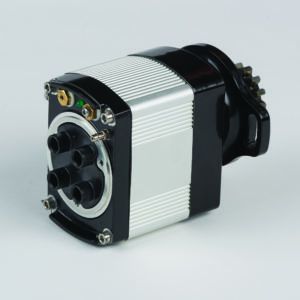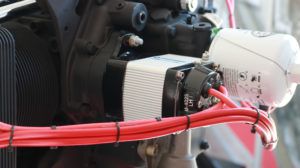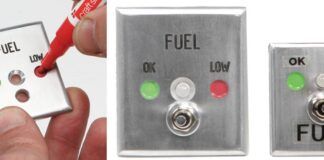 Lycoming debuted a new electronic ignition meant to be a bolt-on replacement for conventional magnetos. Dubbed the Electronic Ignition System (EIS), the devices have no internal moving parts and slip right into conventional magneto housings on four-cylinder Lycoming engines. In doing so, Lycoming joins a number of aftermarket companies offering electronic ignition for homebuilts.
Lycoming debuted a new electronic ignition meant to be a bolt-on replacement for conventional magnetos. Dubbed the Electronic Ignition System (EIS), the devices have no internal moving parts and slip right into conventional magneto housings on four-cylinder Lycoming engines. In doing so, Lycoming joins a number of aftermarket companies offering electronic ignition for homebuilts.
Currently the EIS is available only for the experimental market but the company is working toward FAA certification for retrofits. Lycoming will first release a four-cylinder model but a six-cylinder version is in development. The EIS is designed to use conventional aircraft ignition harnesses and plugs.
As currently configured, the Lycoming EIS is fixed timing only, save, of course, for retard during start. Experimental aircraft will be the first to get a version with variable advance. Look at the photos and you’ll see a small port for picking up manifold pressure. Lycoming says the EIS will have a pre-determined advance curve based on specific model, and that curve will not be alterable by the builder.
 And while the size of the case might lead you to think they have an internal power source, that’s not the case. The EIS requires ship’s power to operate. Lycoming recommends that for aircraft with a single-bus electrical system the builder match one EIS with a conventional magento. Redundant electrical power, or the use of a Lycoming-supplied battery backup, would warrant use of dual EISes.
And while the size of the case might lead you to think they have an internal power source, that’s not the case. The EIS requires ship’s power to operate. Lycoming recommends that for aircraft with a single-bus electrical system the builder match one EIS with a conventional magento. Redundant electrical power, or the use of a Lycoming-supplied battery backup, would warrant use of dual EISes.
Prices have not been set, but Lycoming claims they will be competitive with other systems on the market.













